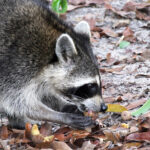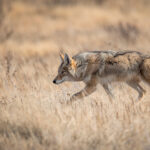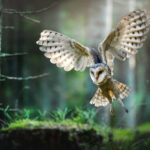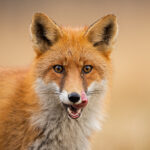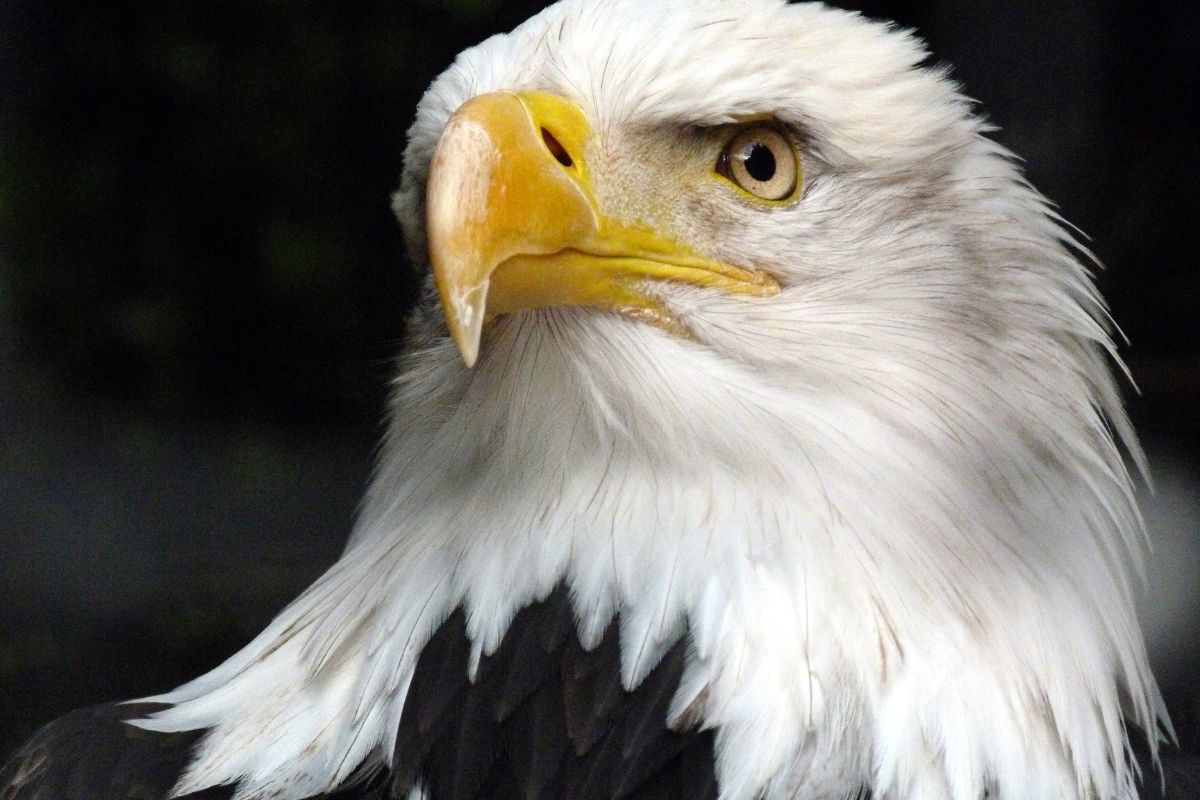Although owls are predatory birds that are high up in the food chain, they can still fall victim to other animals including fox, coyote, wildcats, raccoons, snakes, other predatory birds, and even other species of owl.

There is a difference between predators to adult owls and predators to owl eggs and young owlets. We will discuss which predators target adult owls and which one’s target eggs and young or injured owls.
Predators to adult owls
As we mentioned, the owl is high up on the food chain and there are limited other predators that will attack or eat an adult owl. Many times, it is either an opportunistic animal that sees a perfect opportunity or it is another predatory bird fighting over territory.
Some ground predators such as coyote, fox, and wildcats may attack and eat an adult owl if presented with a good opportunity. Often though, these animals will avoid going after a healthy adult owl if it’s a larger species. Owls have large, sharp talons that can inflict severe injuries on attacking animals and many won’t take the chance.
Some other predatory birds such as hawks and eagles may attack and even eat an adult owl. Many times, this starts out as a territory dispute. Owls will nest and hunt in the same habitat as hawks and eagles. Since owls don’t build their own nests, they will typically commandeer an existing nest that is usually abandoned. This puts them right amongst hawks and eagles. This can lead to both sides feeling like the other is encroaching on their territory. If a fight breaks out and an owl is killed, a hawk or eagle may eat the owl.

Some owl species will actually prey on other owls. Like with hawks and eagles, this typically starts as a territory dispute. This can be more likely in an area where food sources are sparce. If an owl is already struggling to find enough food, they won’t take kindly to more competition moving into the area. Owls, especially great-horned owls, have been known to kill and eat other owls to reduce the competition.
Predators to eggs and young owlets
You’re much more likely to see predators preying on owl eggs and young owlets than healthy adult owls. The eggs and owlets are often defenseless if the parents are not close by. While many species of owl will have the female stay with the nest while the male hunts for food, the eggs and owlets may not be guarded 24/7. Any moment the parents are gone can result in a predator swiping the eggs or owlets for an easy meal.
Predators of eggs can include ground predators such as fox and coyote, if the nest happens to be on the ground. Nests in trees can be susceptible to snakes, raccoons, wildcats, and other predatory birds.
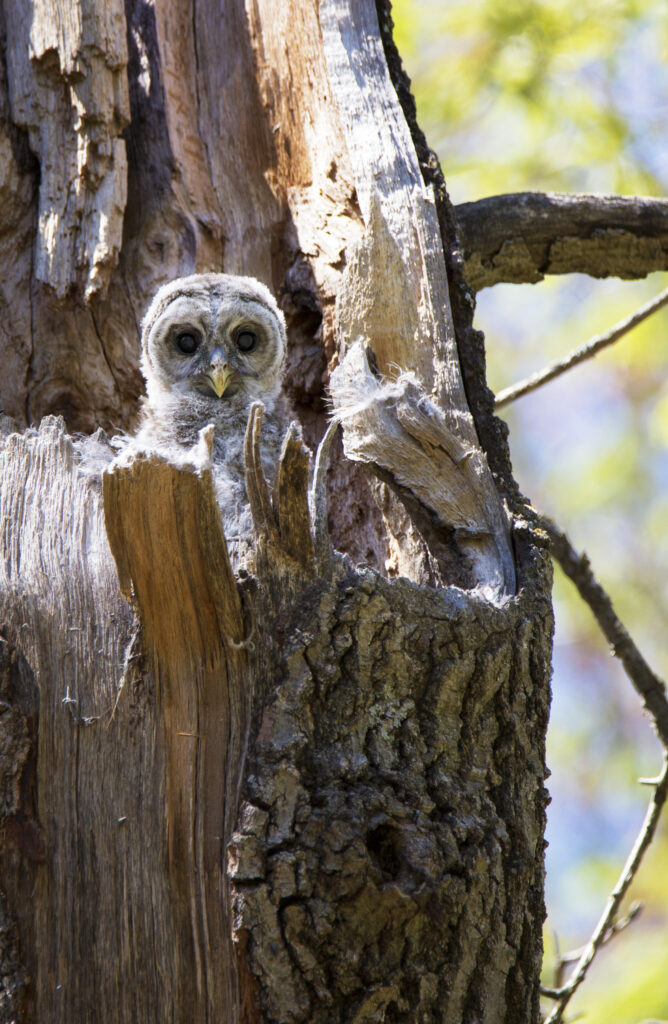
Owlets can fall prey to the same predators, especially if they happen to fall onto the ground. Owlets rely on their parents for protection, so anytime they are not together is a danger for them. An injured owl can also fall victim to these predators. Many of these predators are opportunistic hunters and spotting an injured owl could look like an easy meal for them.
Human Impact
While some other predators will attack and eat owls, nothing compares to the impact that humans have. While humans may not eat owls, we are responsible for impacting them more than any other predator. Constant development is destroying not only their homes, but the habitat of their food sources.

This is either compressing more animals into a smaller habitat area or forcing them to live amongst the chaos of urban life. Those that choose to stick to urban areas must deal with the dangers of traffic. It is common for owls to be struck and injured or killed by vehicles. Finding a way to coexist has become a necessary task that we are still trying to accomplish.
- What Do Squirrels Eat? Learn About Their Diet and Winter Survival - October 14, 2024
- What Do Raccoons Eat? Discover Their Diet and Eating Habits - October 6, 2024
- What do foxes eat? - October 5, 2024

